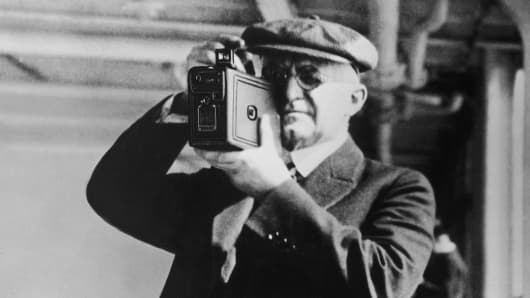Watzman's book is well researched and illustrates a simple fact: There is no secret to creating loyal employees. George Eastman created one of the world's most loyal workforces because he was loyal. You don't have to create a sophisticated internal branding campaign to convince employees to be loyal when you define leader the way George Eastman did.
George Eastman's workers knew he had their back. He believed a hard day's work should be rewarded with a good life, and he put his money where his mouth was. He knew that there was only one way to create loyalty, and that was to be loyal.
What happened, then? If it worked well, why is so hard to find—particularly in a large corporation—a company like Eastman Kodak today?
One reason can be found in the parts of The End of Loyalty focused on GE. Unlike Kodak, GE was unionized, and in the 1950s the company took a confrontational stance toward organized labor. That effort was led by Lemuel Boulware, GE's Vice President of Community and Labor Relations. Boulware's hardline stance toward labor became known as "Boulwareism."
Boulware wasn't just known for his combative stance toward his unions. During his tenure, the company undertook a program designed to educate employees on the principles of Economics 101, from a decidedly corporate viewpoint. That program including mandated reading, most notably journalist Henry Hazlitt's Economics in One Lesson. GE's efforts also included hiring Ronald Reagan to tour the company's plants and give speeches touting management's perspective.
Reagan excelled in his role, and earned the label "The Great Communicator" on merit.
If you've ever opened an Economics 101 textbook, you learn that there is literally no difference between a human being and a wrench. Both are forms of capital. Granted, I am not a tool guy—my wife is the man around our house—but it would not cause me a great deal of pain to get rid of a wrench.
But human beings and wrenches are very different. There is no way to make a loyal wrench. And there is no way to make a loyal employee if you think of him or her the same way you would a wrench.
The End of Loyalty: The Rise and Fall of Good Jobs in America illustrates a simple fact:
When it comes to loyalty, there is no secret sauce. Loyalty is gained when it is given.
Loyalty is also highly influenced by power. In the United States, companies often have the power to terminate employees for any reason (or no reason) and the ability to restrict them from earning outside income. Most companies make that clear with a stack of documents employees sign on day 1. The fact that the vast, vast majority of employers do not follow George Eastman's example and have so tilted the balance of power in favor of the company means that the type of loyalty Watzman writes about might be gone, replaced by corporate feudalism rebranded as "loyalty."
How do we change that? We can change the way we teach business and economics, and recognize that a human being is different from a wrench.
And though Kodak has had well-known struggles in the digital age, the near century-long dominance of their industry shows that when it comes to creating loyal employees—and understanding the relationship between loyalty and results—following George Eastman's example would be a good place to start.
Commentary by Dustin McKissen, the founder and CEO of McKissen + Company, a strategy, marketing, and public relations firm based in St. Charles, Missouri. The firm does consulting work analyzing how politics effects the business climate for clients in the U.S., Europe, and Latin America. McKissen was named one of LinkedIn's "Top Voices" in 2015 and 2016. He holds a Bachelors degree in Public Policy, and a Masters degree in Public Administration and is currently pursuing a PhD in Organizational and Industrial Psychology. Follow him on Twitter @DMcKissen.
For more insight from CNBC contributors, follow @CNBCOpinion on Twitter.



